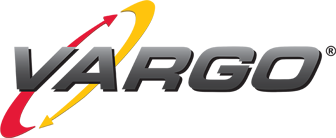The following checklist provides an overview of the “basic functions” available with the MandateIP AWMS. The MandateIP AWMS provides the basic or most essential features to manage the operation of a fulfillment or distribution center. An “Adaptive” WMS (AWMS) has an advantage over a traditional WMS in that it includes real time or dynamic optimization of the principal workflow. Dynamically optimized workflow adapts to the changing conditions found in fulfillment operations.
In this checklist, the distinction between WCS and WMS is not identified. The VAS AWMS is highly integrated with the WCS allowing this distinction to disappear. By integrating WCS and WMS functionality optimization of the decision processes is based on all available data making the resulting system more efficient and productive.
Each VAS AWMS system is delivered configured to meet the specific need of the customer. There could be some unusual circumstances where the required functionality was of such complexity that additional configuration was necessary. This is identified to the customer before the system is ordered. There is a set of “base” modules included in either an AWMS or WCS system. These modules are identified in the checklist as “Base” modules.
External System Interfaces (1 Interface Included In Base)
- Host, Sockets, FPT, NFS, Async
- Equipment Control Systems, Conveyance, Sorters, ASRS, Carts, Vehicles etc.
- EDI interfaces—Direct, Through Host
- Worker Interfaces, RF, PTL, Handheld, Voice, Mobile, Wired
Inbound Yard (Shipment Arrival) Management
- Realtime Trailer Arrival Information Collection and Reporting
- Yard Management, Trailer Locator
- Dynamic Receipt Processing Prioritization And Trailer Unloading Scheduling
Receipt Processing
- ASN / EDI Receipt Processing
- Q/A—inspection management and scheduling
- User Specified % Of Shipment, Vendor, Random Selection
- Inbound Weight Check
- Shipment, Vendor and Carton level holds and releases for allocation
Customer Returns Processing
- Batch Hold, Re-sellable, Other Disposition
- Like SKU “Recursive” Sortation For Piece Sorters
- Add To Stock, Write Off
Dynamic Stock Disposition
- Rules For Allocation, Strict FIFO, FIFO prioritization, Emptiest location
- Directed To Putaway
- Directed To Fulfillment (cross dock, cases, pieces)
Inventory and Putaway
- Directed, Random, Slotted, Replenishment
- Multiple Locations Per SKU, Multiple SKUs Per Location
- User Defined Locations (Creation/Deletion -temp & permanent locations)
Split Case, Full Case, Residual Management, Cartonized/Open Case Flowrack
- Overlap Storage, Retrieval an Cyclic Operations To Reduce Travel
- Container Within A Container Concept, Container Identification By Member Scan
Cyclic Or Cycle Counting
- Random
- Scheduled
- Opportunistic (Continuous Based On Workload) Overlap With S/R Operations
- Re-Checks, Double Checks, Sample Size
Dynamically Optimized Fulfillment
- Dynamic Inventory Allocation
- Waveless Picking, Wave Picking, Overlapping Wave Picking
- Labor Balancing, Within Zone, Between Zones, Between Areas
- Prioritized Continuous Processing, Realtime Acceptance On New Orders
- Optimization Of Piece Sorters, Dynamic Assignment On Item Arrival
- Zone and Zoneless Picking, Realtime Configurable Zones, Pick Paths
- Realtime Optimized Travel, Acceptance Of New Resources
- Worker Interface Independent (Paper, RF, Voice, PTL)
- Synchronized Inter-Zone Operation
- Optimized Order Consolidation, Reduction Of Order Dwell Time
Added Value Services
- “Work” Identifies Required Actions, Functions, Descriptions, Pictures
- Automatic Generation Of Paper Work
- “Work” Attached To Orders, Items
- “Work” Assigned To Stations/Resources
- Work Balancing Between Assigned Resources
Outbound (Shipping) Management
- Shipment Routing, LTL, Shotgun, Priority
- Carton, Order, Shipment Weight
- Outbound QA Management, By User Defined % By Shipment
- Waybill, BOL Generation
- ASN Notification
- Reporting System (Base)
- Extensive Standard Reports, User Customizable Special ”Workstation Views”
- User Defined Custom Reports As Required, Definition Of Data, View, Printed
- Uses Powerful SQL Reporting Language For Data Definitions
- Printed, Screen Reports Ave Separate View Definitions
- Screen Reports Item Tagging, Linkages, Actions
Productivity And Tracking Reporting (Base)
- Interfaces To “Office Tools”, Spreadsheets, DB etc.
- AWMS Collects Data, Analysis Done Externally To AWMS
- Automatic Data Aging, Data Cleanup, Data Maintained 31 Days
- User Specified Events
- Log of Individual Events
- Log of Event Counts Over User Specified Periods
- Equipment Error Event And Error Resolution Logging
Worker Authorization, Login–Logout (Base)
- Individual Worker Authorization Levels, Restriction Of Unauthorized Action
- Add/Delete/Modify Users and Configurable Password Aging


